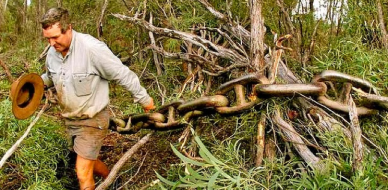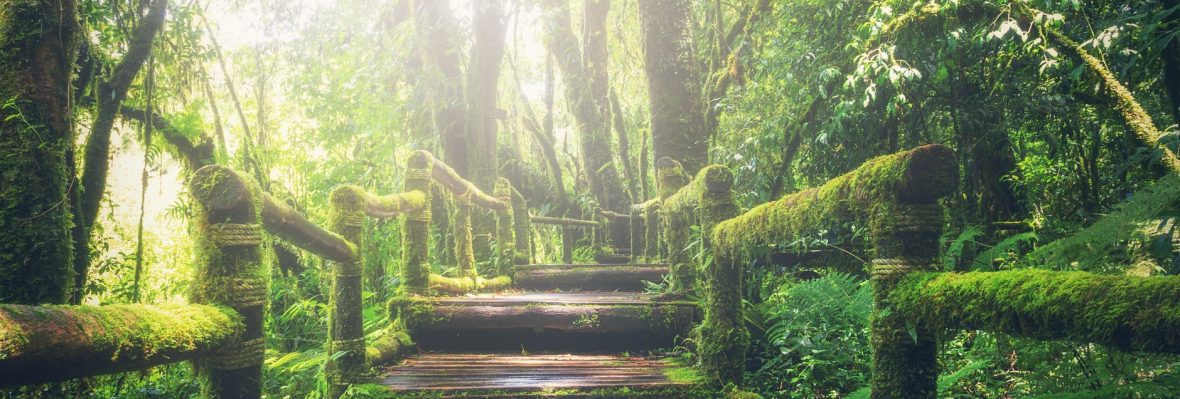Why do we need to take urgent account of current climate maladaptation in ecological restoration…..

I am sitting in my office writing this blog barely 100m away from where Professor Tim Flannery would have written sections of his best seller The Future Eaters. It was published while he was Director of the South Australian Museum more than a decade ago. Flannery’s book describes the actions of destructive colonial settlers as “maladaptative” to the delicate Australian environment.

The Future Eaters became an iconoclastic call to arms to preserve Australia’s natural heritage, and its message remains as relevant today as it was back when it was published.
Thoughts of this book have recently resurfaced with me following the publication of our article in the journal Biological Conservation, with another past director of the South Australian Museum, Professor Andrew Lowe. Together with our colleagues we found more evidence of maladaptation. But unlike the overt results from the mechanised wave of European clearance, the subject of our maladaptation is virtually blind to the naked eye, exists in common trees species and provides a whole new set of challenges for biodiversity management.

So what is maladaptation?
Wikipedia defines Maladaptation (/ˌmælædæpˈteɪʃən/) as a trait that is (or has become) more harmful than helpful, in contrast with an adaptation, which is more helpful than harmful. All organisms, from bacteria to humans, display maladaptive and adaptive traits.
This definition is fine for a general context, but for our study we need to consider maladaptation from an evolutionary perspective. Where maladaptation is the poor growth or survival of some plants relative to others in a set environment. Environment and climate are important predictors of plant growth and survival and determine where a plant can or cannot grow. But environment is not the only driver, genetic issues can also influence maladaptation.
Importance of maladaptation for restoration?
Globally there are now important initiatives to reverse habitat clearing and degradation and to rebuild biodiverse systems. However with the rapid rate of recent climate change, choosing where to source seed from for revegetation has become a complex and unresolved step in the practice of restoration.
The distribution of plants is largely predicted to shift poleward and upward as global temperatures increase due to climate change. These shifts will have particularly dire consequences for some plants (e.g. forest dieback), resulting in the creation of new ecosystems that have no historical equivalent. Restoration practices, rather than accepting the magnitude and velocity of these changes, often take a nostalgic view of what the landscape should look like in the future. reinstating these past landscapes and disregarding their maladaptation could hamper our ability to cultivate resilient function into the degraded systems where restoration is being practiced.
Our study
In our recent paper we looked at how the origin of seeds used for restoration effects the growth and survival of plants in restoration projects.
To test this idea, we selected plants that were local (within 5km), intermediate (20kms) and distant (45kms) to a site that was being restored in southern Australia. The local plants were from the highest rainfall area of the study, with intermediate and distant plants from successively drier habitats. We grew approximately 1500 plants from seed collected from these 3 sources together at a single site, known in scientific terminology as a common garden. If the local plants are well adapted (and not maladapted) to the site, then we would expect them to outperform plants from other more distant sources. However, this expectation was not borne out by our findings (see below). Rather, we found that local plants had the highest death rates, grew slowest and showed signs of increased invertebrate attack and stress, all signs of maladaptation. By contrast the plants from warmer dryer sources survived and grew the best.

These results have implications for restoration practices and would suggest that reviewing current seed strategies could significantly improve restoration outcomes. For example at the site in our study, up to 10% greater survival, up to 25% larger plants and up to 45% more pathogen resistance could be achieved during establishment by incorporating a more diverse range of seed from warmer and dryer locations. These new seed sourcing strategies which mix provenances from a combination of local and more distant locations (known as composite or predictive provenancing) are now gaining traction with restoration practitioners.
A practical way forward
We identified maladaptation in our landscape because we intensively investigated it. However it may not be so easily observed on casual inspection, as the impacts can be subtle and nuanced. In this system we now have sufficient scientific evidence to take an evidence based approach to restoration practices. Augmenting seed mixes beyond simple local sourcing strategies would provide substantial benefits to this project. Like Flannery’s narrative the options available to restoration practitioners to mitigate maladaptation are not without controversy but sticking with the status quo (sourcing local seed only) will have important suboptimal ramifications, as shown in our results.
Our work also emphasises that we need to take an integrated approach to gathering evidence. This can be done by embedding experiments directly into restoration projects. It provides a cost effective way to develop adaptive management options with restoration stakeholders and hopefully lessen the impact of issues like maladaptation.
I sentimentally enjoy my trees in the ground not in museums or art galleries (see below), but this does not require me to commit to a nostalgic view of the landscape. Rather I understand that restored plant communities need to be persistent, and that this persistence may be challenged by the results we found. If, as William Gibson contends, “the future is already here”, and maladaptation is a fragment of this future, then we are obliged to find practical solutions to mitigate its consequences.

This post, by Nick Gellie, discusses the recent paper ‘Local maladaptation in a foundation tree species: implications for restoration‘ by himself and co-authors Martin Breed, Nikki Thurgate, Shaun Kennedy, and Andrew Lowe published recently in the journal Biological Conservation.


Great article Nick. At Greening Australia, we incorporate composite provenancing into our large-scale restoration programmes as insurance against the shift to hotter and drier climatic conditions across much of southern Australia.